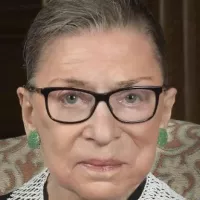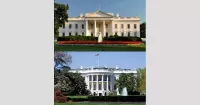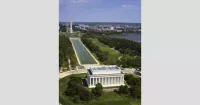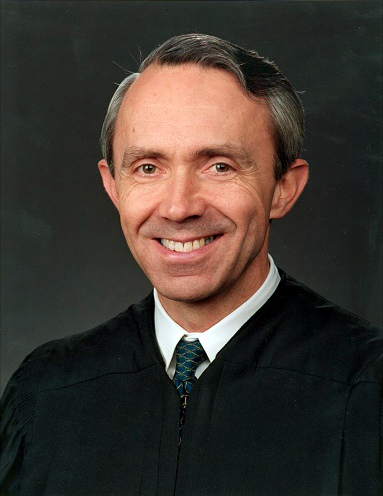Discover the career path of David Souter, from the first major opportunity to industry-changing achievements.
David Hackett Souter was an Associate Justice of the U.S. Supreme Court from 1990 to 2009. Appointed by President George H.W. Bush, he succeeded William J. Brennan Jr. He served under both Chief Justices Rehnquist and Roberts. Souter, initially perceived as a conservative, became known for his moderate to liberal jurisprudence during his tenure on the Court.
1966: Prosecutor
In 1966, David Souter began his career as a prosecutor in New Hampshire.
1968: Assistant Attorney General of New Hampshire
In 1968, David Souter began his career in public service as an Assistant Attorney General of New Hampshire.
1968: New Hampshire Attorney General's office
In 1968, David Souter started working in the New Hampshire Attorney General's office.
1971: Deputy Attorney General
In 1971, David Souter was selected to be the Deputy Attorney General of New Hampshire.
1976: Attorney general of New Hampshire
In 1976, David Souter became the Attorney General of New Hampshire.
1976: New Hampshire Attorney General
In 1976, David Souter became the Attorney General of New Hampshire.
1978: Associate justice of the Superior Court of New Hampshire
In 1978, David Souter was appointed as an associate justice of the Superior Court of New Hampshire.
1983: Associate justice of the New Hampshire Supreme Court
In 1983, David Souter became an associate justice of the New Hampshire Supreme Court.
April 27, 1990: Confirmed to U.S. Court of Appeals
On April 27, 1990, David Souter was confirmed by unanimous consent of the Senate to a seat on the United States Court of Appeals for the First Circuit.
July 25, 1990: Nomination to the Supreme Court
On July 25, 1990, President George H.W. Bush nominated David Souter to the Supreme Court, citing the lack of a substantial "paper trail" as an advantage. Bush stated that he did not know Souter's stances on key issues like abortion and affirmative action.
September 13, 1990: Senate Confirmation Hearings Begin
On September 13, 1990, Senate confirmation hearings for David Souter began. The National Organization for Women (NOW) and the NAACP opposed Souter's nomination.
October 9, 1990: Sworn into Office
On October 9, 1990, David Souter was sworn into office as a Supreme Court Justice, following his confirmation by the Senate with a vote of 90-9.
1990: Judge of the United States Court of Appeals for the First Circuit
In 1990, David Souter briefly served as a judge of the United States Court of Appeals for the First Circuit.
1990: Appointed to Supreme Court
In 1990, David Souter was appointed as an Associate Justice of the U.S. Supreme Court by President George H.W. Bush, filling the seat vacated by William J. Brennan Jr.
1992: Planned Parenthood v. Casey
In 1992, Souter voted with the moderate wing in Planned Parenthood v. Casey, reaffirming the essential holding in Roe v. Wade but narrowing its scope.
1992: Lee v. Weisman case
In the 1992 case Lee v. Weisman, Souter voted with the liberal wing against allowing prayer at a high school graduation ceremony.
1995: Aligning with Liberal Justices
By 1995, Justice Souter sided on more occasions with the more liberal Justice John Paul Stevens than either Breyer or Ginsburg. Justice Souter began to align himself more with Justices Stephen Breyer and Ruth Bader Ginsburg and started voting with the Court's liberals on death penalty cases, workers' rights cases, defendants' rights cases, and other issues.
2000: Bush v. Gore
In 2000, Justice Souter voted along with three other justices in Bush v. Gore to allow the presidential election recount to continue, but the majority voted to end the recount.
2008: End of Supreme Court Term
On June 29, 2009, the last day of the Court's 2008–2009 term, Chief Justice Roberts read a letter to Souter from his colleagues, and Souter reciprocated with a letter to his colleagues.
2008: Potential Inclination to Retire
The election of a Democratic president in 2008 may have made Souter more inclined to retire.
April 2009: Notification of Retirement
In mid-April 2009, Justice Souter privately notified the White House of his intent to retire at the conclusion of the Supreme Court's term.
May 26, 2009: Sotomayor Nomination
On May 26, 2009, President Obama announced his nomination of federal appeals court judge Sonia Sotomayor to replace Souter.
June 2009: Anticipated End of Supreme Court Term
In June 2009, Justice Souter apparently became satisfied that no other justices planned to retire at the end of the Supreme Court's term.
June 29, 2009: Farewell Letters
On June 29, 2009, the last day of the Court's 2008–2009 term, Chief Justice Roberts read a letter to Souter from his colleagues, and Souter reciprocated with a letter to his colleagues.
2009: Retirement from Supreme Court
In 2009, David Souter retired from his position as an Associate Justice of the U.S. Supreme Court.
2009: Retirement Announcement
In 2009, after Barack Obama became U.S. president, David Souter announced his retirement from the Supreme Court, later succeeded by Sonia Sotomayor. Souter continued to hear cases by designation at the circuit court level.
2020: End of Sitting by Designation
After his retirement from the Supreme Court and until 2020, David Souter regularly sat by designation on panels of the First Circuit Court of Appeals.
April 2024: Absence from First Circuit Court of Appeals
As of April 2024, David Souter had not sat by designation with the First Circuit for several years and was not expected to do so that fall either.
Mentioned in this timeline

Donald John Trump is an American politician media personality and...

Barack Obama the th U S President - was the...

Ruth Bader Ginsburg was an American lawyer and Supreme Court...
The United States of America is a federal republic located...

The White House located at Pennsylvania Avenue NW in Washington...

Washington D C is the capital city and federal district...
Trending

5 months ago Sundance Film Festival's Final Utah Edition: Egyptian Theatre Excluded, Gratitude Celebrated.

Nancy Pelosi is a prominent American politician notably serving as the nd Speaker of the House of Representatives twice -...

Hoda Kotb is a prominent American broadcast journalist television personality and accomplished author She held the position of main co-anchor...
Jim McMahon is a former NFL quarterback most famously known for his time with the Chicago Bears He was drafted...

David Bromstad is an American designer and television personality best known for winning the first season of HGTV Design Star...
29 days ago SeaWorld and Busch Gardens Face DOJ Probe Over Walker Ban Policy.
Popular

XXXTentacion born Jahseh Dwayne Ricardo Onfroy was a controversial yet...

Stranger Things created by the Duffer Brothers is a popular...
The Kennedy Center Honors are annual awards recognizing individuals and...
Turning Point USA TPUSA is an American nonprofit organization founded...

Candace Owens is an American conservative political commentator and author...

William Franklin Graham III commonly known as Franklin Graham is...
